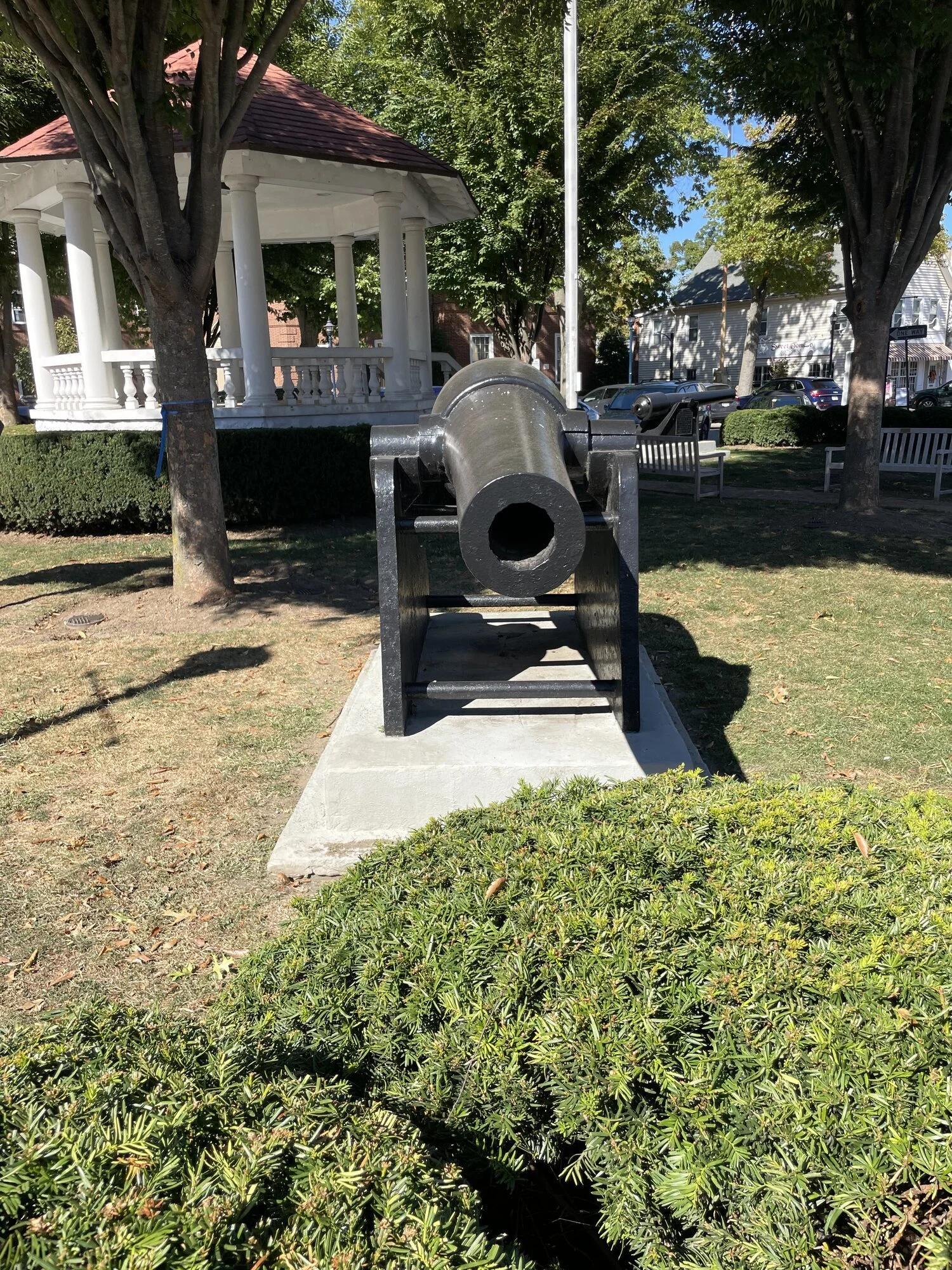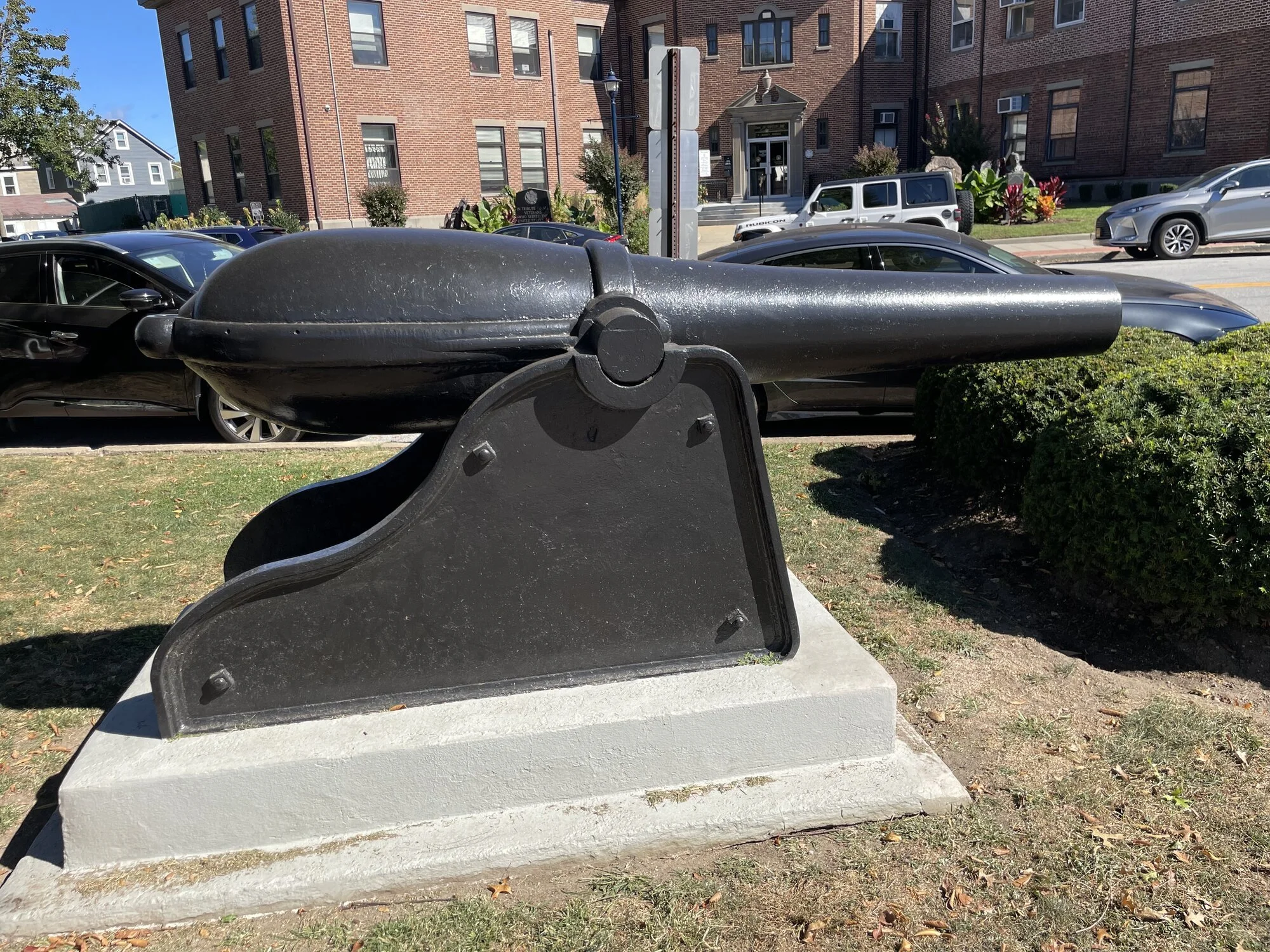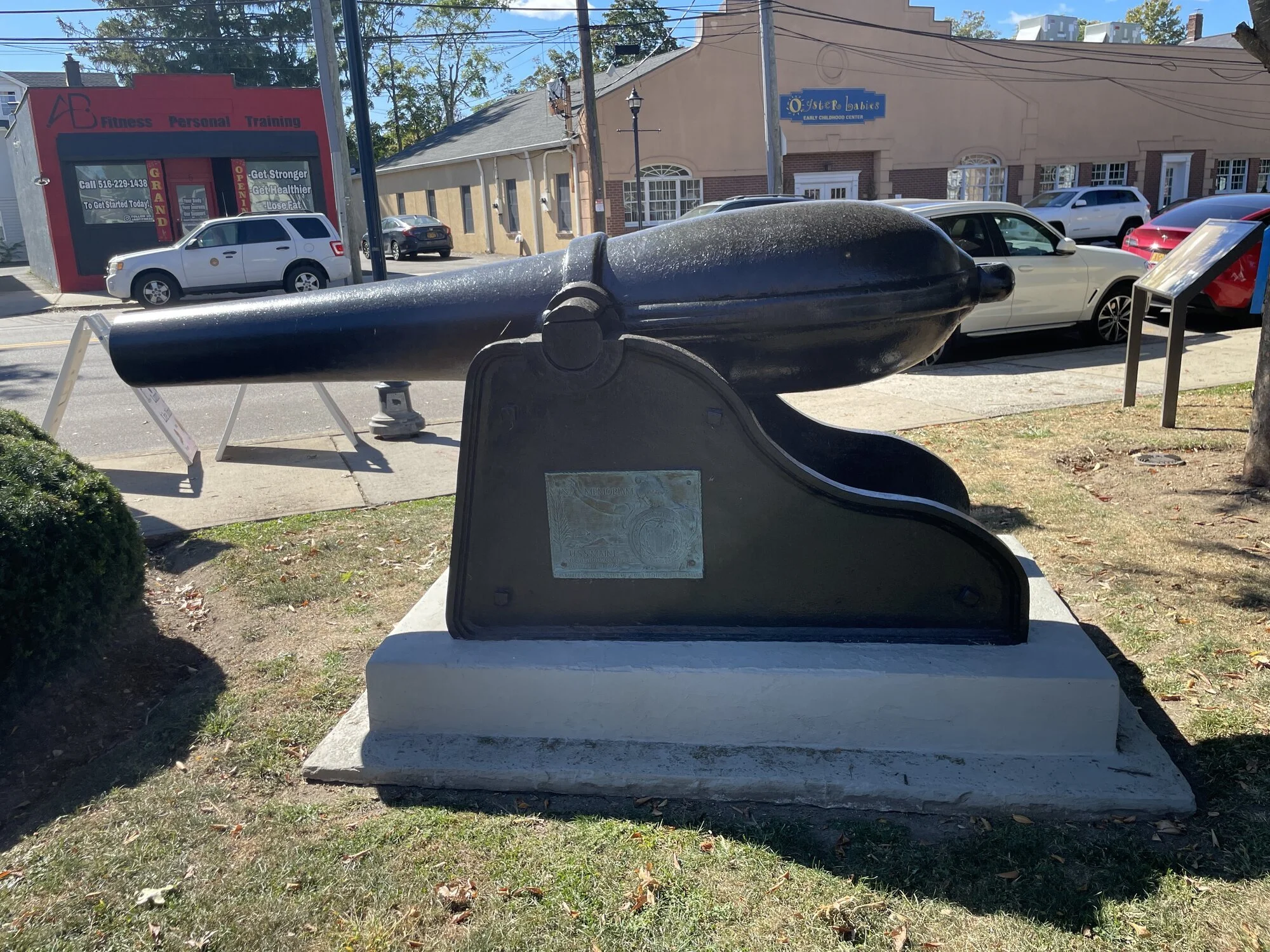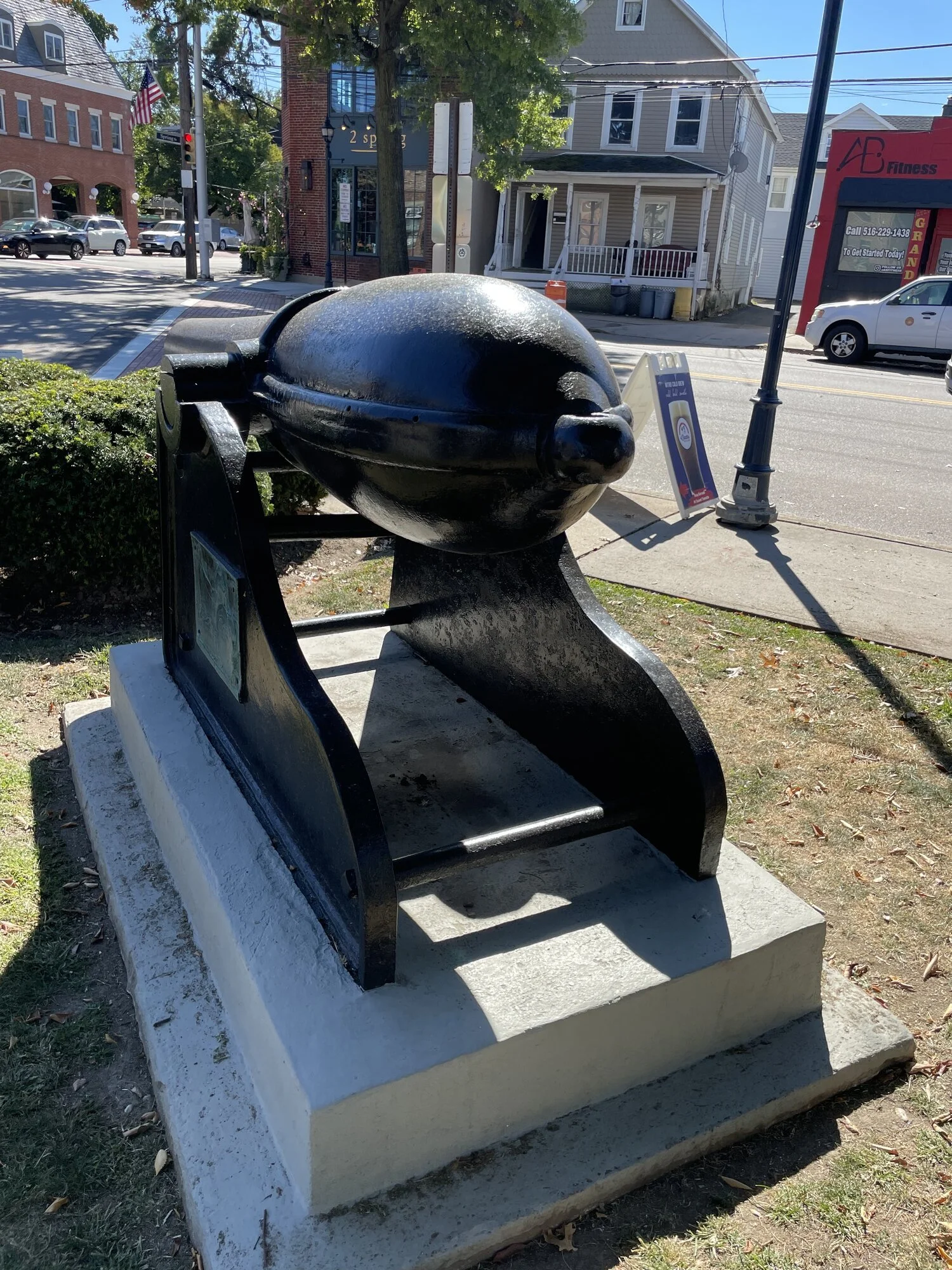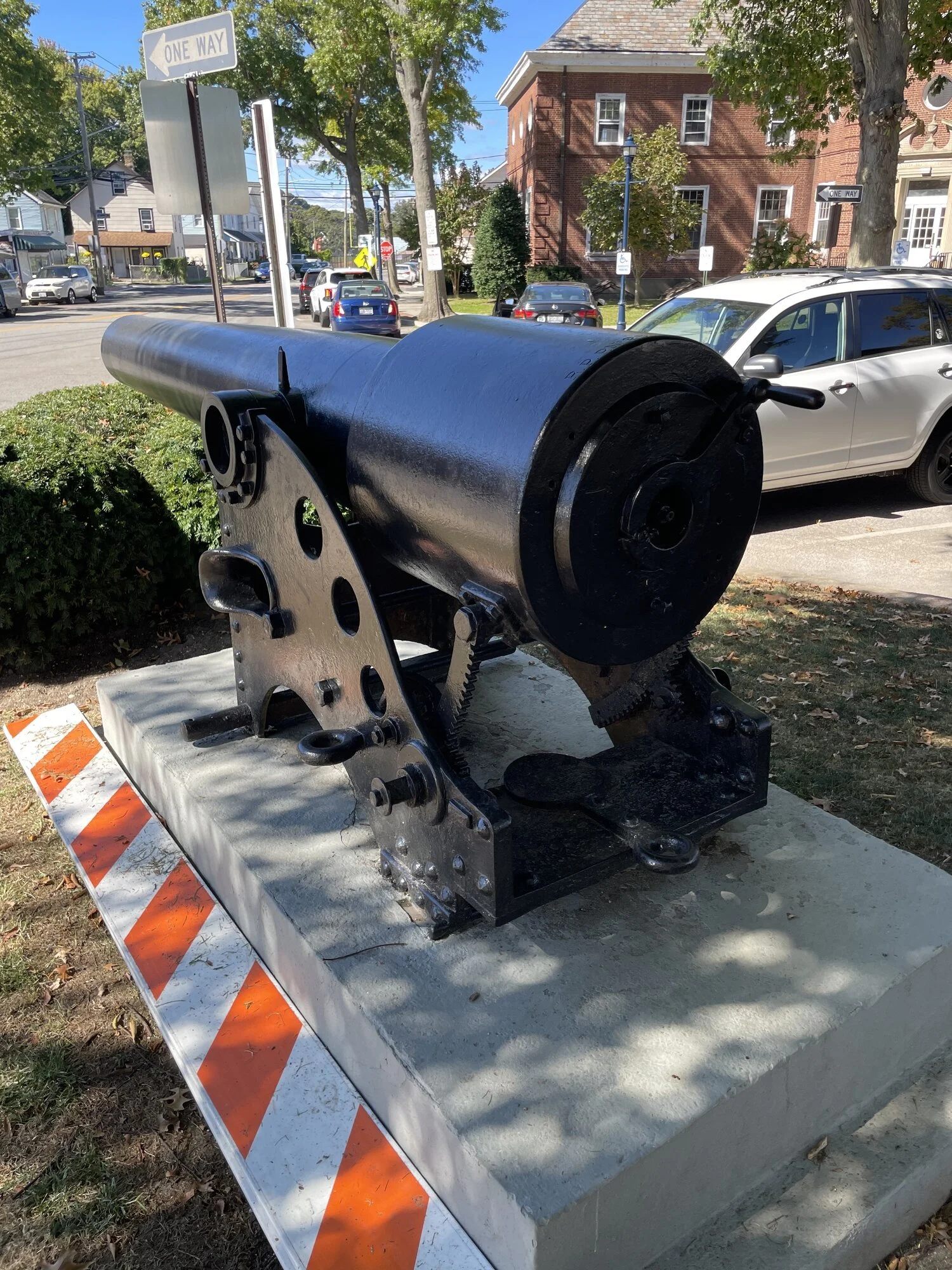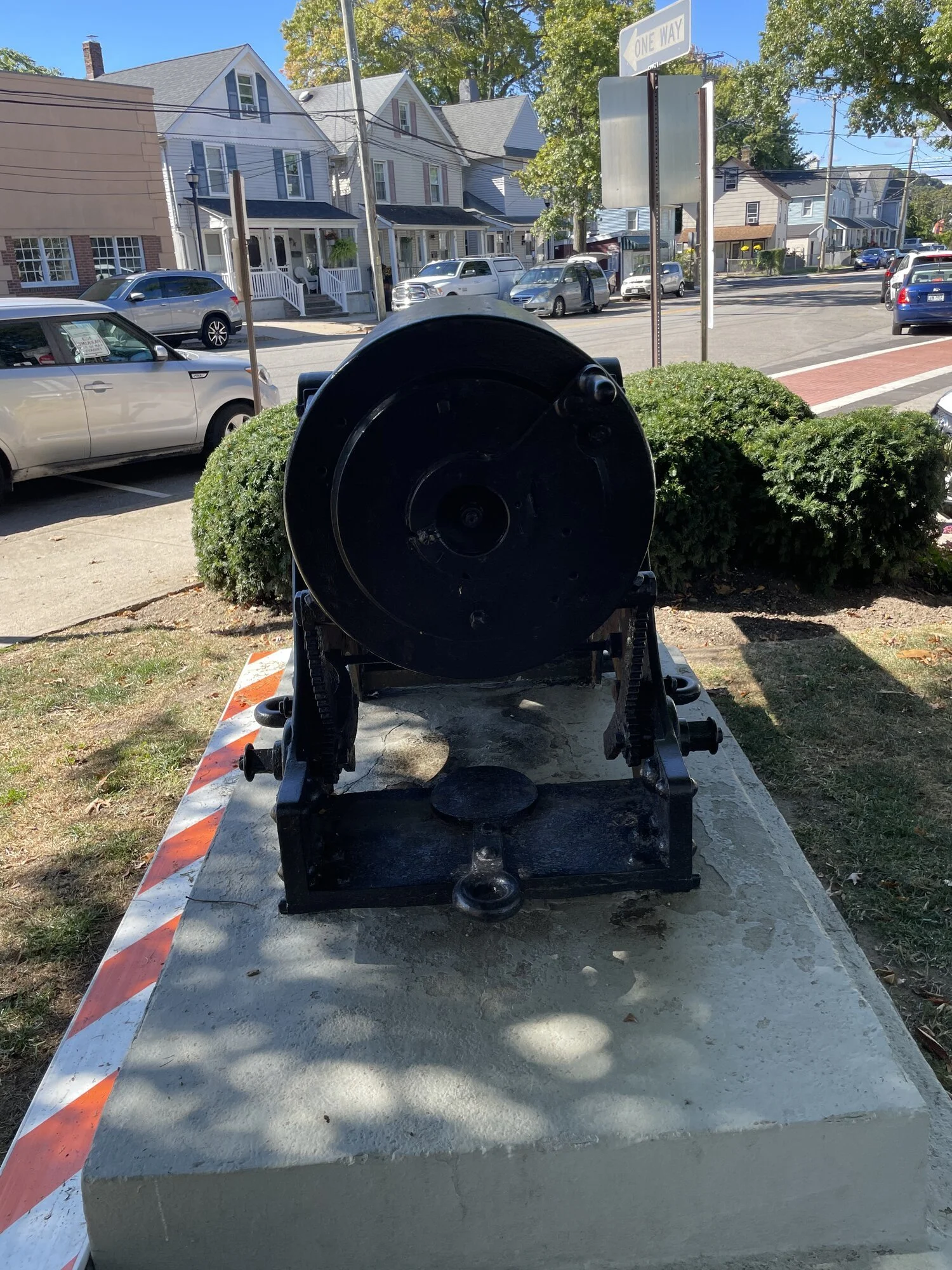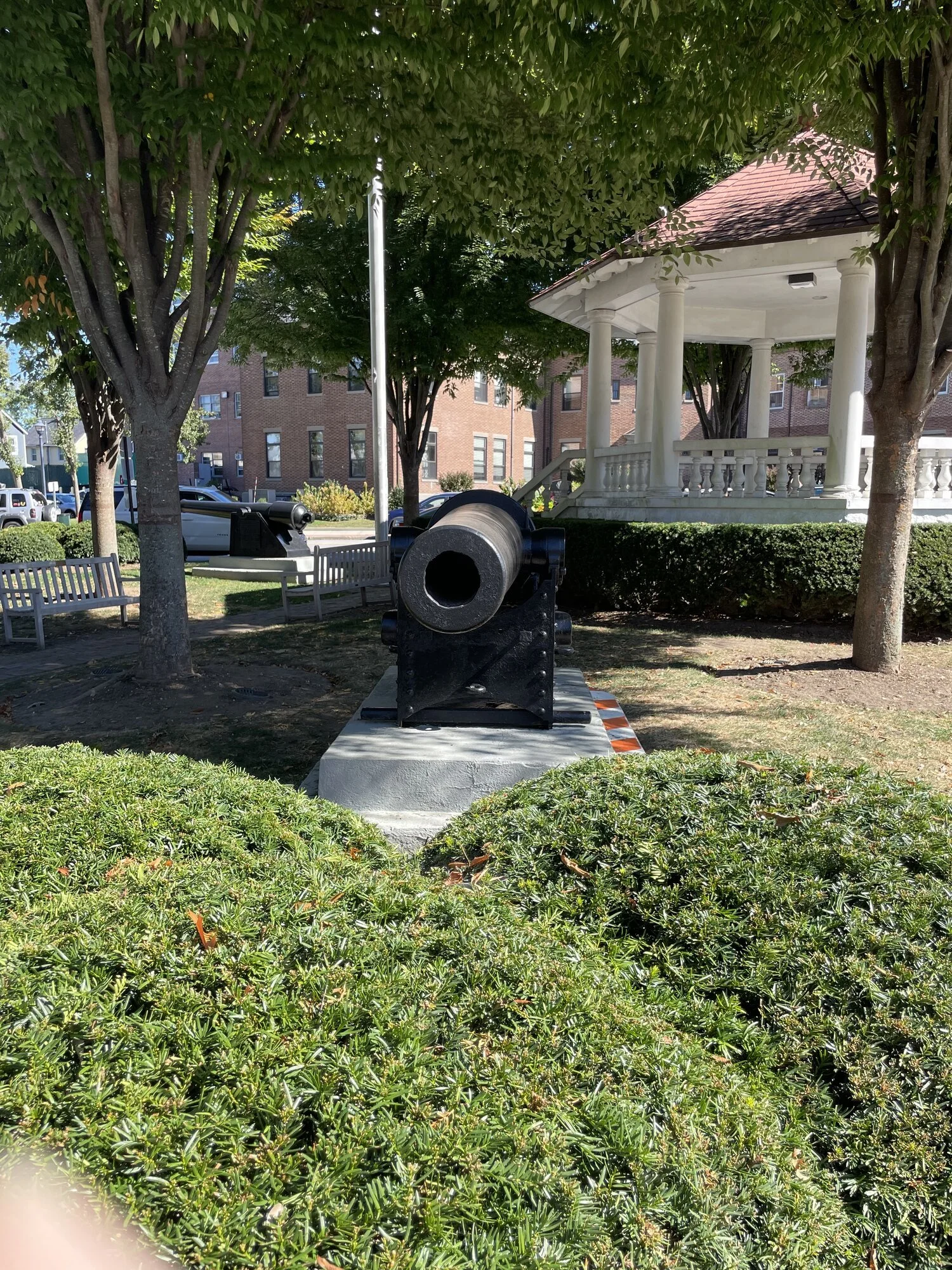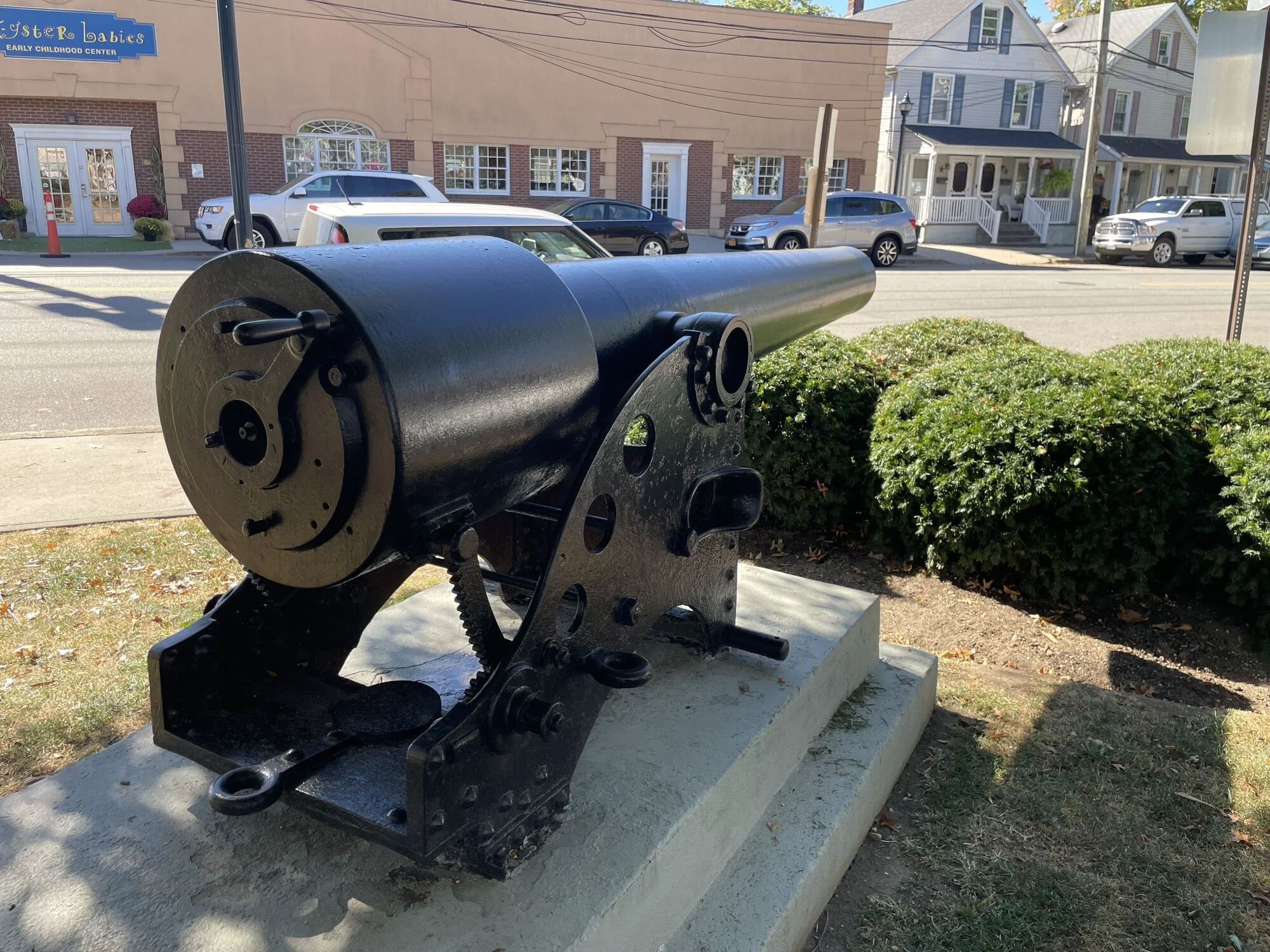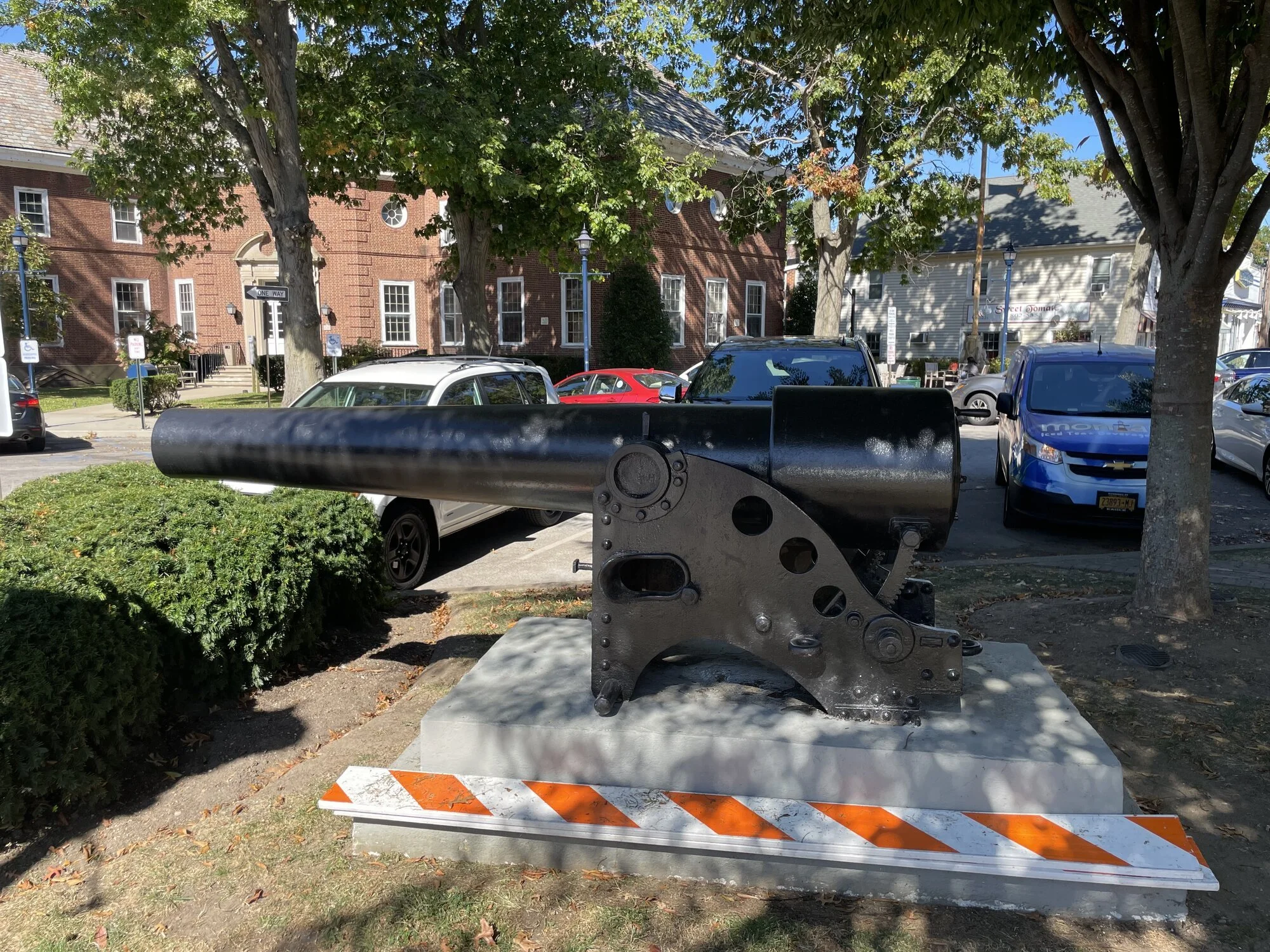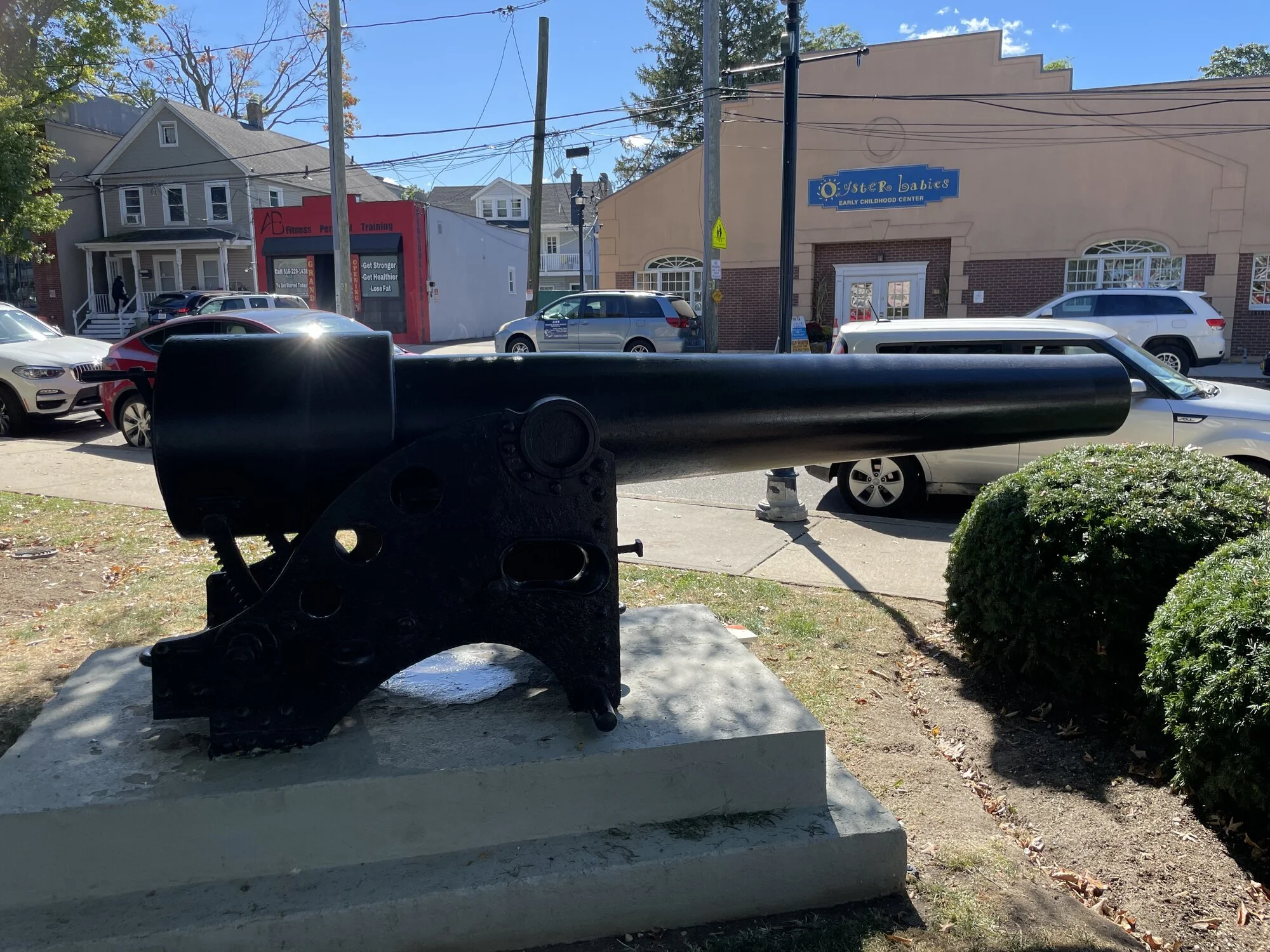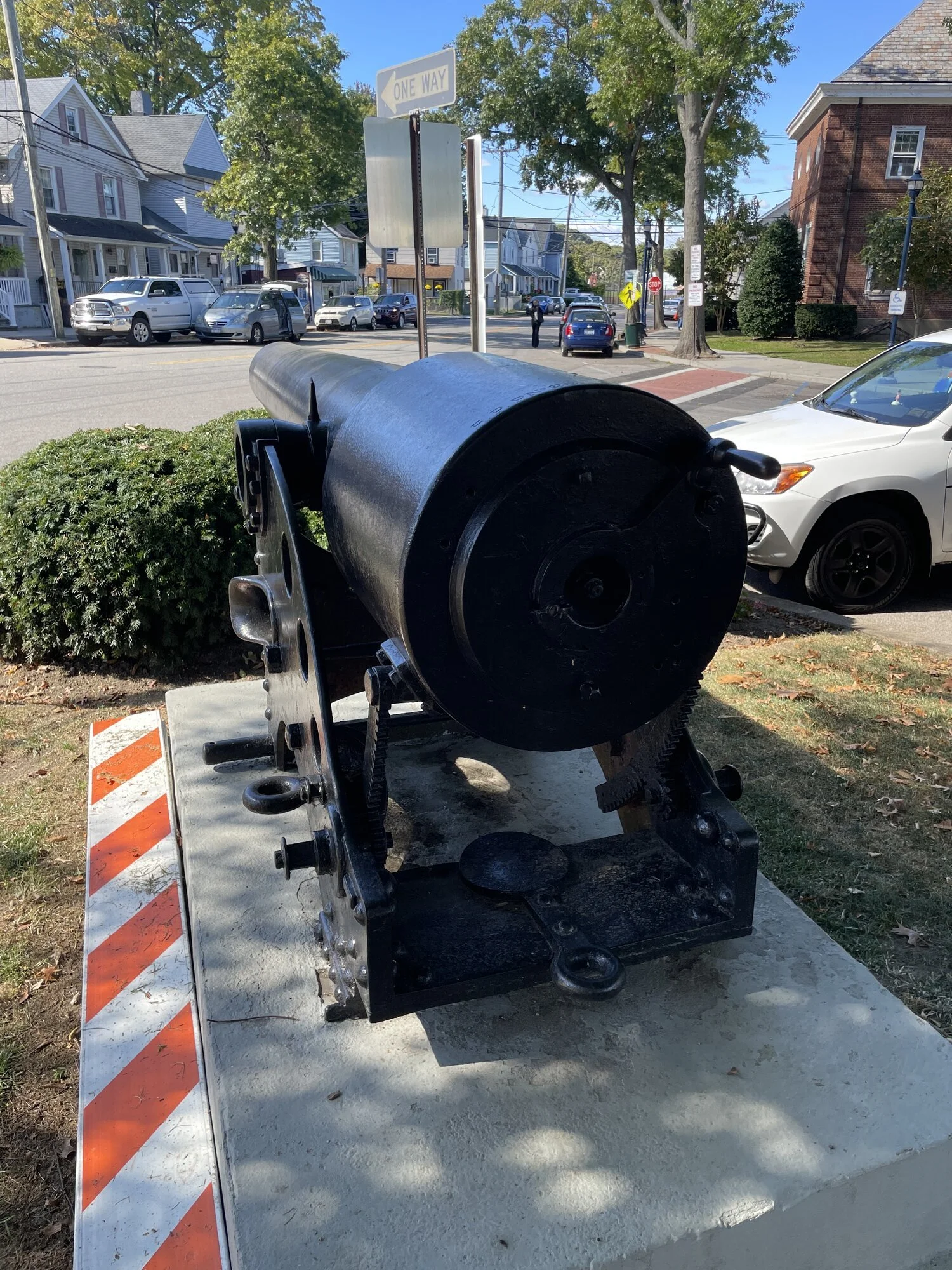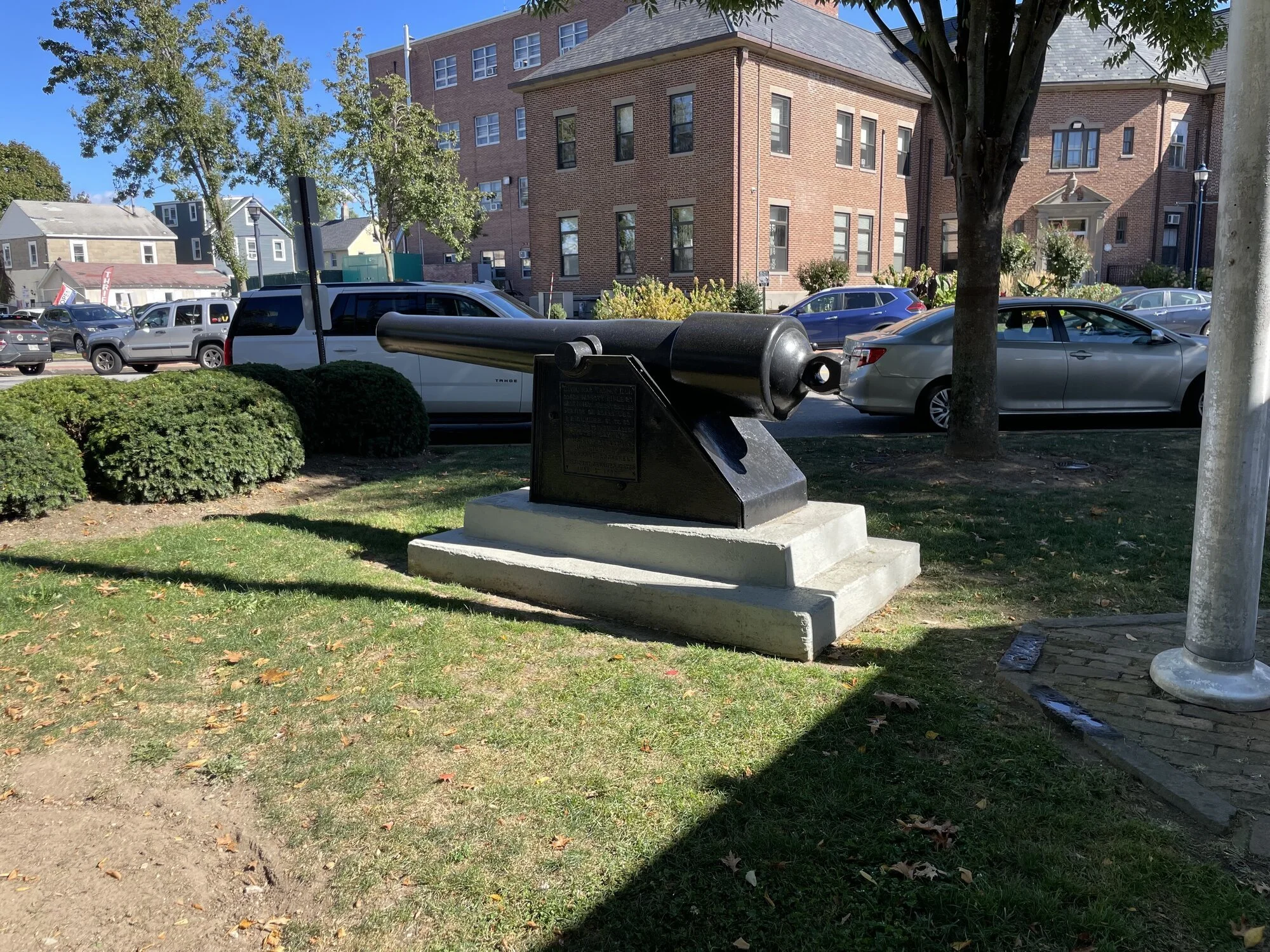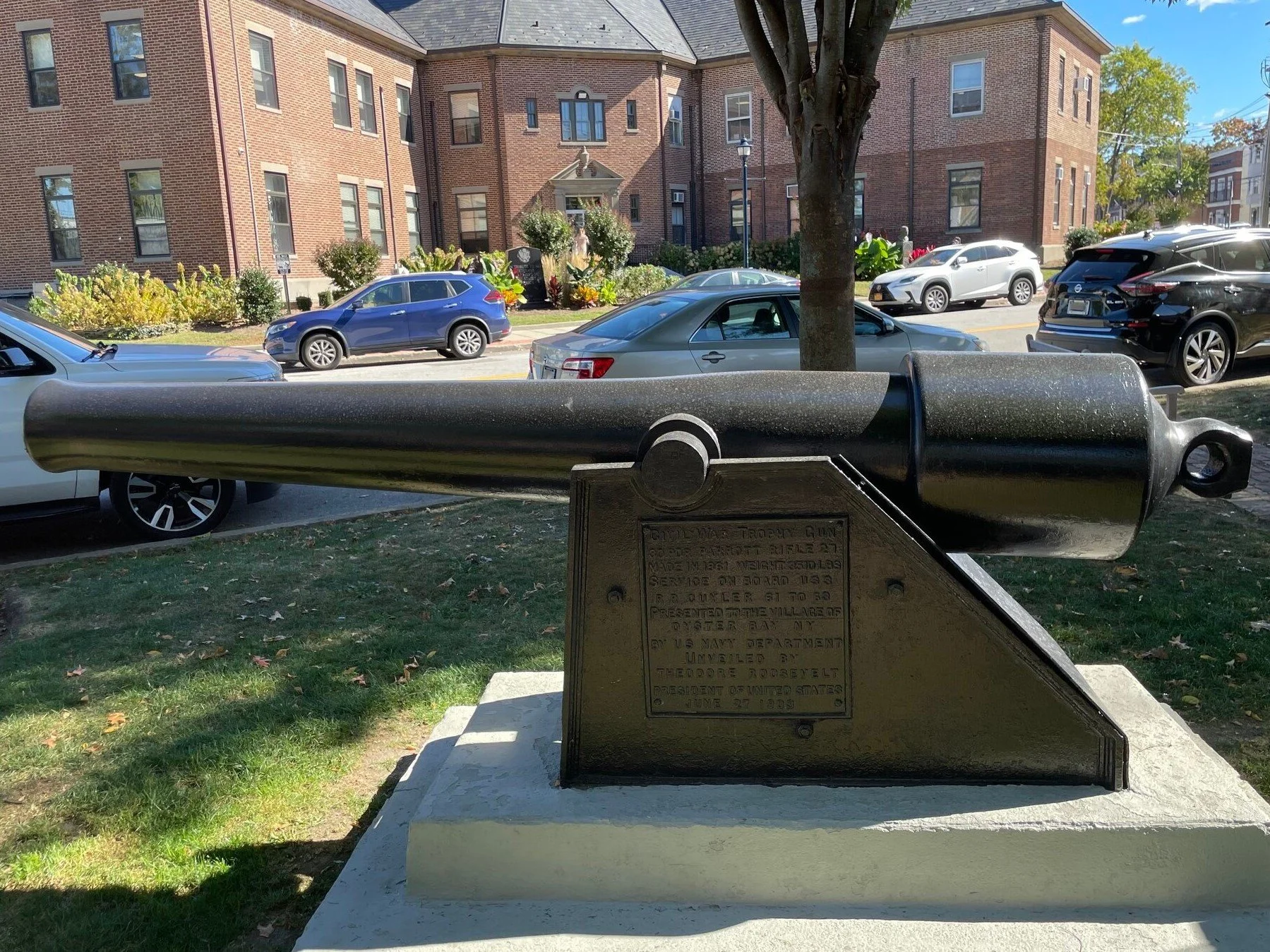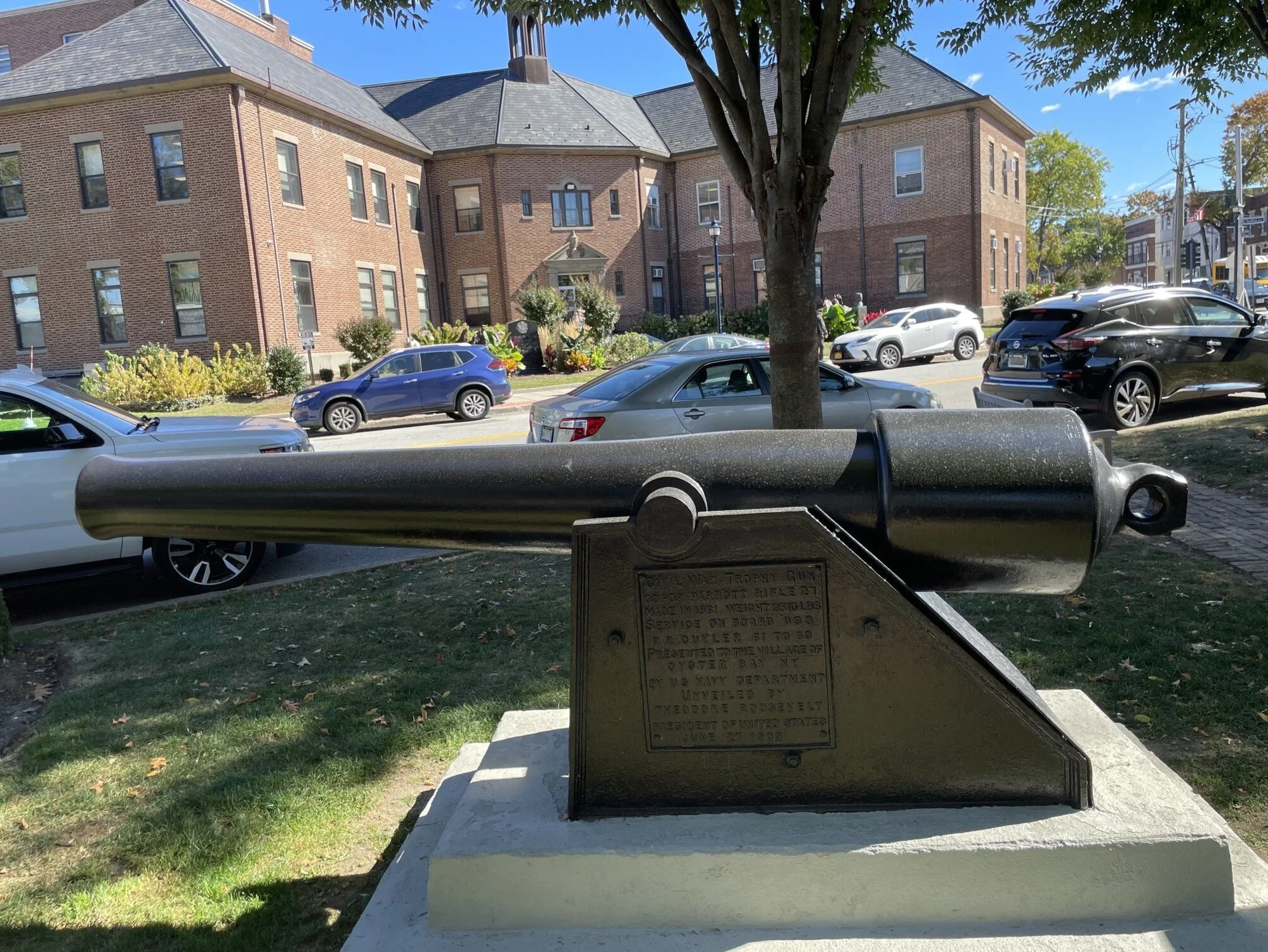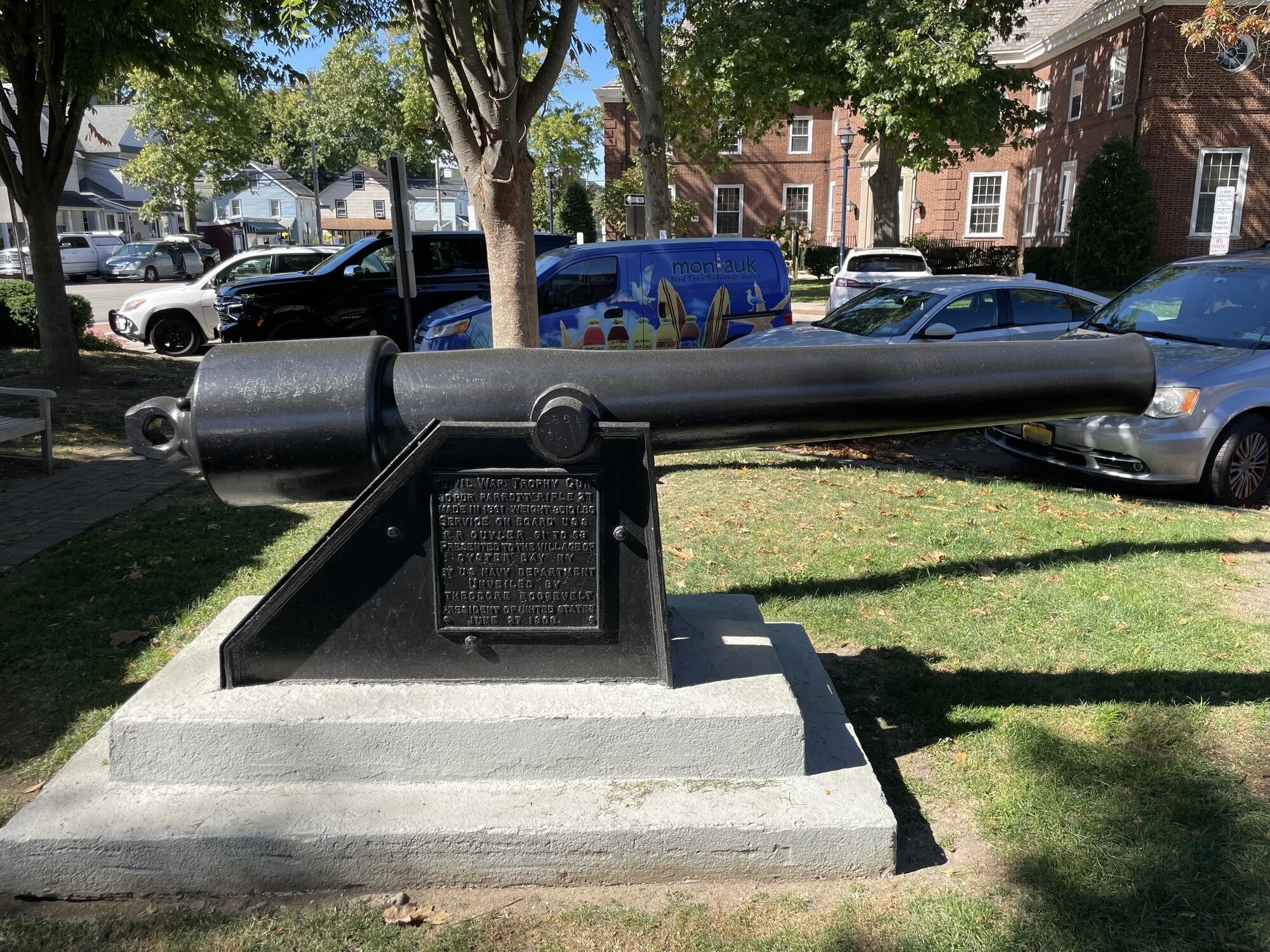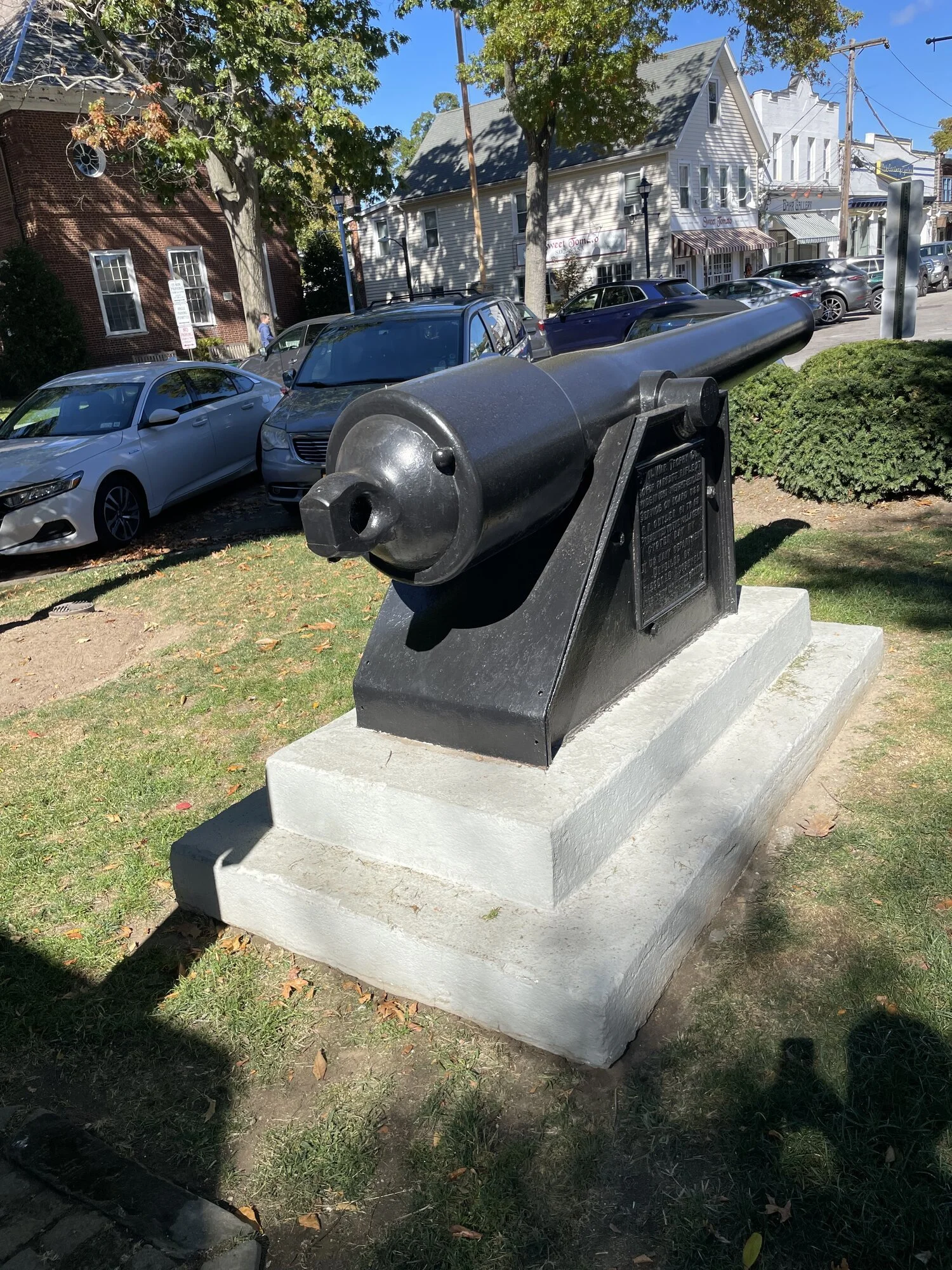The US Navy Cannons of Townsend Park in Oyster Bay, New York
Three United States Navy cannons surround a band stand at Townsend Park in Oyster Bay, New York. The three cannons are a 60-Pounder Parrott Rifle converted to a breechloader (center), a 30-Pounder Parrott Rifle (background left), and a 50-Pounder Dahlgren Rifle (background right).
Please note: the recent photos of the three cannons in this post were taken by another photographer and are used with his permission. Many, many thanks to him for supplying the photos of these three fascinating USN cannons.
Three American Civil War era United States Navy cannons are displayed surrounding a bandstand in Townsend Park in Oyster Bay, New York. While many displays of two or three Civil War era cannons survive in public parks in the United States, often the cannons seem to have been chosen without regard for whether the cannons themselves were significant. (See the growing number of posts about the 32-Pounder of 4,500 pounds - a type that was largely produced after the war and that saw little or no service with the fleet.) By contrast, these three cannons all are quite interesting: a very rare Dahlgren Rifle, a breechloader conversion representing the post-Civil War Navy, and a Parrott Rifle which saw active service in the Civil War. Given President Theodore Roosevelt’s interest in the US Navy and that he unveiled at least one of these cannons displayed at the park, I wonder whether the cannons were selected by him or at least for him knowing his interest and knowledge of the navy. The three cannons are:
50-Pounder (5.1-Inch) Dahlgren Rifle, Registry Number 6, manufactured by Wiard in 1861. The weight is marked as 5,678 pounds. This cannon is one of three of the type that are known to exist, the others being at West Point and Annapolis. It is mounted on a pedestal which carries a plaque dedicated to and made from material reclaimed from USS Maine. John Dahlgren’s efforts to develop rifled cannon started just before the Civil War. His rifles had a similar shape to his much more common smoothbore shell guns, but the rifles were cast without trunnions in the theory that doing so would create a more uniform and stronger casting. (Dahlgren’s 1861 Patent Number 32,985 may be read here: https://patents.google.com/patent/US32985A/en ) The trunnion band and breech strap are manufactured out of bronze. While his rifled cannons did not achieve the fame or success of his much more numerous smoothbores, Rear Admiral Dahlgren chose to pose in front of a 50-Pounder Rifle when photographed aboard USS Pawnee in 1865. See other posts about Dahlgren Rifles.
60-Pounder (5.3-Inch) Parrott Rifle, Registry Number 28, manufactured by the West Point Foundry in 1864. The weight of the Parrott as originally manufactured was 5,410 pounds. This Parrott, originally a muzzle loader, was converted to a breechloader after the Civil War. It seems to be identical to two Parrott Rifles in Laconia, New Hampshire. It is mounted on an original carriage. Warren Ripley in Artillery and Ammunition of the Civil War describes the conversion process for this type: “The conversion was accomplished by cutting off the breech immediately in rear of the reinforcing band, reaming out the bore to a point a little past the trunnion and cutting rough threats into the rear part. Into this was inserted a steel sleeve threaded at the base to receive the breech block which, in modern terminology, would be described as the interrupted-screw type” (Ripley, pg 117). See other posts about 5.3-Inch Parrott Rifles.
30-Pounder (4.2-Inch) Parrott Rifle, Registry Number 27, manufactured by the West Point Foundry in 1861. The weight of this cannon as manufactured was 3,510 pounds. The pedestal upon which the Parrott is mounted has a plaque which states that the rifle saw service aboard USS R.R. Cuyler and that it presented to the Village of Oyster Bay, NY by US Navy Department and was unveiled by Theodore Roosevelt, President of United States, on June 27, 1903. USS R.R. Cuyler was a civilian steamship purchased into the US Navy in 1861 (Wikipedia Article). The ship had an active career as a blockader and took several prizes. According to a local news article, the bandstand was also the sight of a number of speeches by Roosevelt who lived nearby. See other posts about 30-Pounder Parrott Rifles.
Rear Admiral John A. Dahlgren stands beside a 50-Pounder Dahlgren Rifle aboard USS Pawnee in 1865. The ruins of Fort Sumter are in the background. This photograph was likely composed to underline the role that Admiral Dahlgren and the ordnance which he invented had in reducing Fort Sumter and achieving victory in the war. Library of Congress Photo: https://www.loc.gov/resource/cwpb.02988/
Rear Admiral Dahlgren and other US Navy officers photographed aboard USS Pawnee. Note the 50-Pounder Dahlgren Rifle mounted on a Marsilly carriage at right and the Dahlgren boat howitzer visible behind the officers. Naval History and Heritage Command Photo: https://www.history.navy.mil/content/history/nhhc/our-collections/photography/numerical-list-of-images/nhhc-series/nh-series/NH-43000/NH-43289.html
